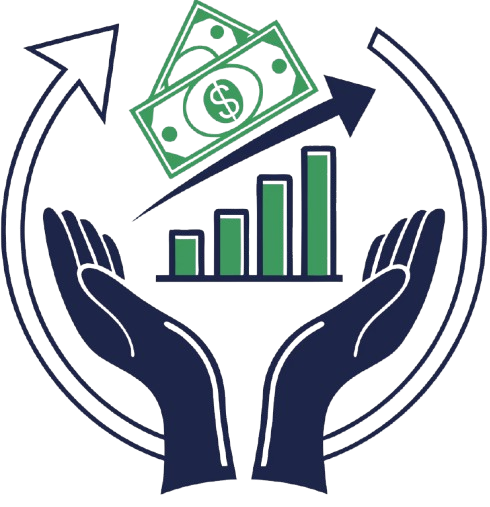Finance has become buried within algorithms. AI is promising everything — everything from efficiency of operations to personalized services being offered to you. But watch out! These are ethical and risk issues we need to think about. Are we designing a fairer new financial system?
Because there’s so much opportunity for AI to be used the wrong way in finance, we have to scrutinize what can go wrong. AI can be prejudiced. The choices can be fully incomprehensible. These are high stakes. Managing these risks well, and staying true to what is right, can earn us trust, and enable us to build the financial world in which we want to live, for generations.
The Dangers of AI in Finance Enhanced awareness
Risks of AI in finance exist as well. But, what are the downsides of AI in finance? Important to understand what could go wrong.
Bias and Discrimination in Algorithms
AI learns from data. But this data can mirror society’s biases. The result is that AI can make biased judgments about loans, insurance and investments.
Or rather, if data is old, it may indicate that fewer loans were made to certain communities. So if AI learns like this, it will continue denying loans in those neighborhoods.” That in itself can break vulnerable people. For them, it can also be a stumbling block.
Security and Privacy of Original Breaks or Breaks
And, these AI systems are full of financial data. “As such, they are a target for cyberattacks.” A data breach exposure can expose sensitive information. This data must be protected.
Regulations such as the GDPR and CCPA describe how companies should protect people’s data. And such violations may result in strict regulations and a breach of trust. Data Security, Privacy May Be Out of Control.
Reproducibility Challenge (Collaborate on Reusing Trained Models)
In some instances, it is opaque how A.I. reached its conclusions. Most models are black boxes. This lack of visibility makes finding errors a challenge.
And if things go wrong — if an A.I. makes a bad on a given problem — it’s also hard to know why. That can create problems of accountability.” Techniques such as SHAP values and LIME help interpret AI.
Ethical Challenges of AI-Enabled Financial Systems
Ethics and moral principles need to be followed while using AI in finance Ethics are the essential measures to be considered. These data will help has to develop AI in a responsible way by applying ethical principles.
Fairness and Transparency
AI systems must be fair to all. We need to understand how AI makes decisions as well. Transparency breeds trust.
How can we quantify fairness in machine learning? The aim is to develop better strategies for making AI more transparent. Saying the system at least has openness and fairness gives everyone a better shot at it.
The pros and cons of accountability and responsibility
However, who is held up responsible when things go awry? One key to creating accountability around AI decisions is assigning responsibility.
We need systems of governance for AI, and humans to oversee it. AI has to be supervised by humans. AI isn’t perfect. Humans are needed to keep the equilibrium.
Chapters 11—the Core of Data Ethics and Protection
How we extract and digest data is vital.” [1] We should pursue news as a data-informed ethics].
Techniques such as anonymization can help protect privacy. Ethical guidelines for data usage are a must. Anonymization: We can keep our information private.
Avoiding The Post-Freezer Road: A Risk Management Approach to AI in Finance
How do we best mitigate the risks, and contextualize it to AI? Here are some ways of dealing with the risks of AI in finance. These are all things that will help ensure things are safe and ethical.
Forming AI Governance Frameworks
AI Governance is essential to minimize risks and to keep it ethical. The framework needs to lay out very strict guidelines, roles and responsibilities.
AI governance is essentially setting rules regarding the usage of AI. So humans can use AI safely and ethically. Responsibilities Are Transparent And Have Rules.
Classifying and Tracking AI Audits
AI audit and monitoring can help us detect the errors in AI. Frequent checks can help catch risks and biases before they develop.
Use key performance indicators (KPIs) to measure the effectiveness of AI systems. “When we monitor things, then we can fix problems immediately. AI systems that are being watched, to make sure they are operating as expected.
Understanding Data Quality, Integrity, and Standards
These AI models are only as good good as the training data. Validate and Clean Data Regularly.
In September, the Federal Chief Data Scientist Issued a call to agency heads to use that data to improve agency performance through data standards that maximize accuracy. AI will have errors, or mistakes without good data. Good data leads to good AI.
Examples: The Ethical Implications and Risk Management Failures of Grenke AI in Finance
So here are some actual instances of what can go wrong in the context of AI. The cases are didactic for crafting lessons. Calculating thorough breakdowns is essential.
Case 1: Flash Crashes in Algorithmic Trading
Markets have, in the past, blamed algorithmic trading for glitches. These failures may raise ethical dilemmas.
A flash crash is when the market drops extremely fast. This is achieved via algorithmic trading We should get yearned these risks better.
Illustration 2: Artificial intelligence lending models have bias
AI lending models are sometimes biased. They may be the grounds for discrimination against specific people’s groups.
Biases in AI models may affect people’s lives. [Note: “ modelling ” is the act of creating a model; “ modeling ” is the act of presenting or performing a model.] And everyone deserves a fair shot.”
The Future — Responsible AI in The Financial World
Where do we go from here on AI and ethics? We have to look at new issues and new trends. We have to think big about the future of AI.
The Influence of Regulation and Standards
There are rules and standards that can make AI ethical. Ethical AI in Finance — a potential facilitator of Solution by Regulatory Framework.
Policies can lead to responsible AI. Good rules can help guide AI. Overregulation, however, can stifle construction and innovation.
They also complicate cooperation and learning. Education on ethical AI must be enhanced.
Co-built Ethical AI It is also important to educate people around AI. And when people work together, everyone wins.
In Summary: A Road Map for Responsible Innovation in Financial services AI
AI is changing finance. Its substantial rewards need to be weighed against the risks. [We have to think about fairness, transparency and accountability. So we can use AI to solarize the economic future. Building AI that is good for society will require grit, team spirit, and commitment.
Key Takeaways:
- If at all unsure, doing something about AI bias is better than doing nothing.
- I regret to inform you that I am unable to grant your request.
- Make strong A.I. rules and define clear roles.
- Please donate to teach ethics for responsible AI systems development.
- Be a better you and make the world a better place.

